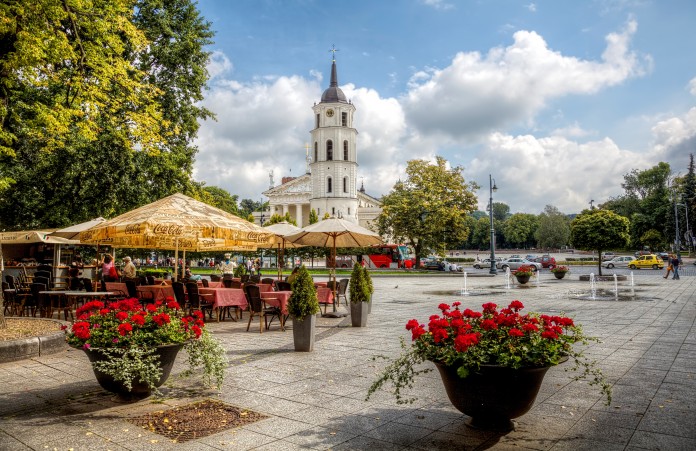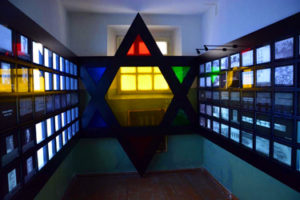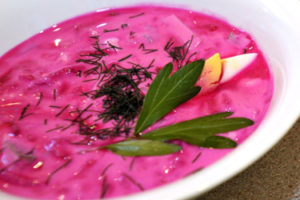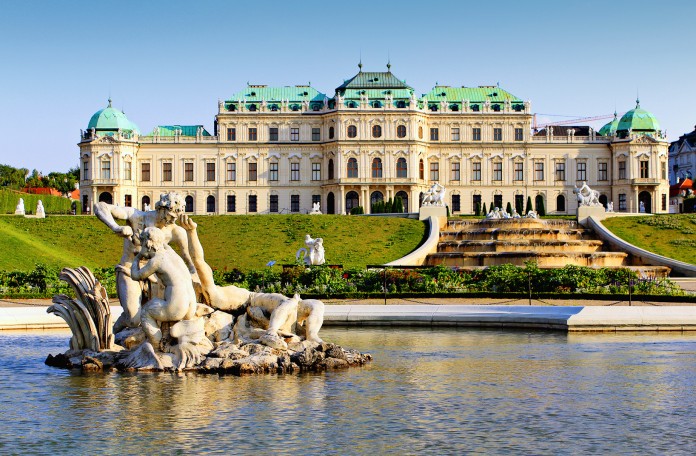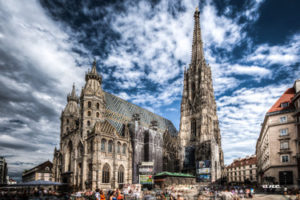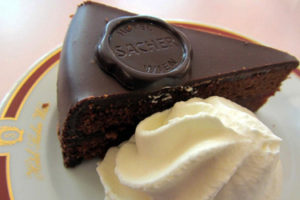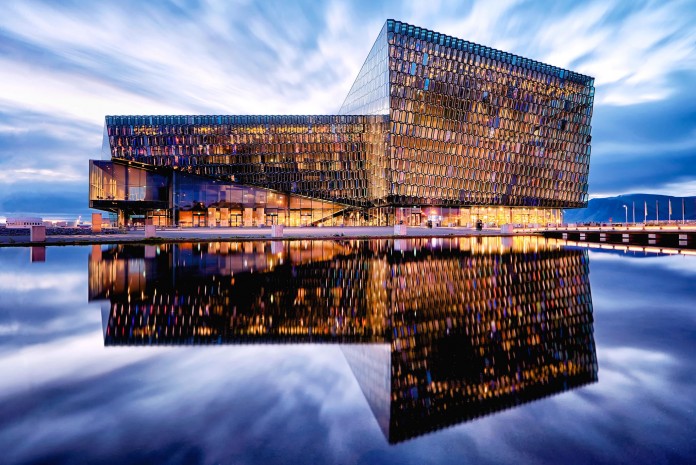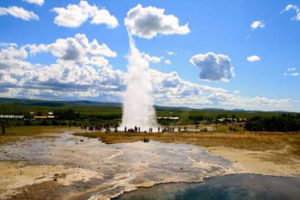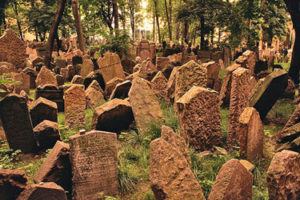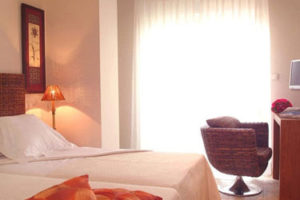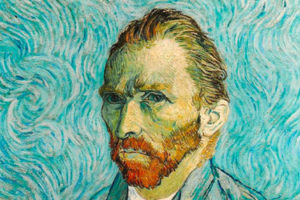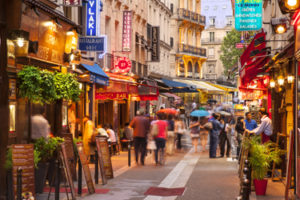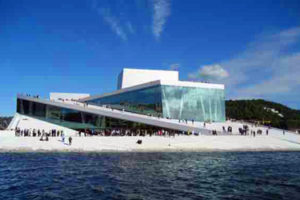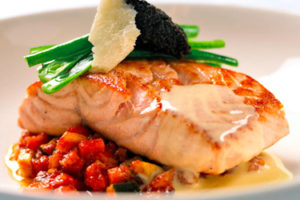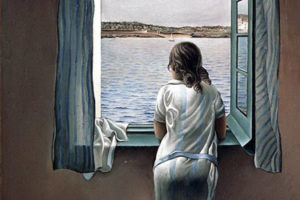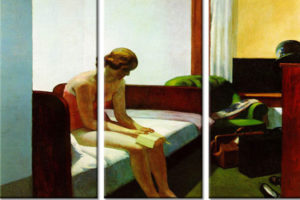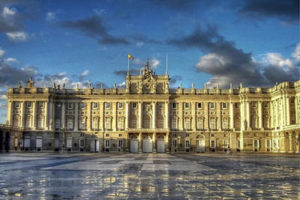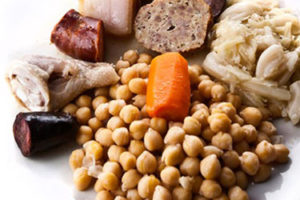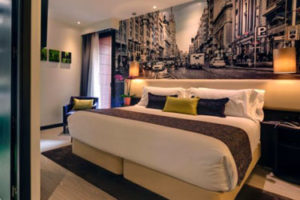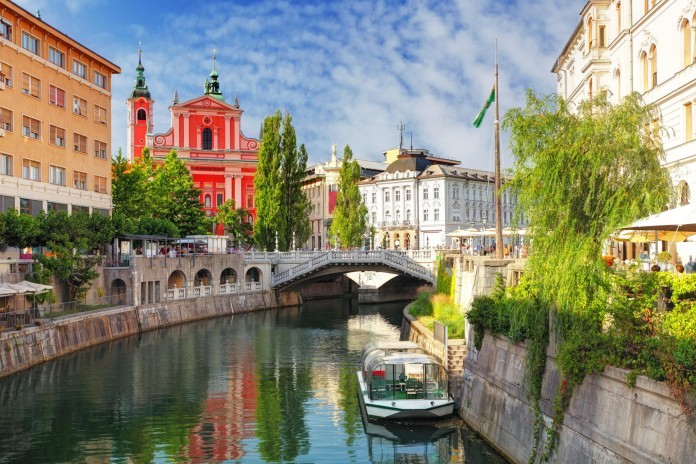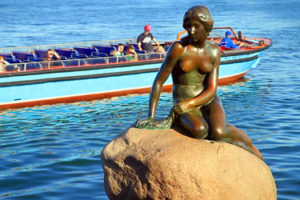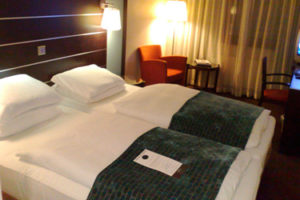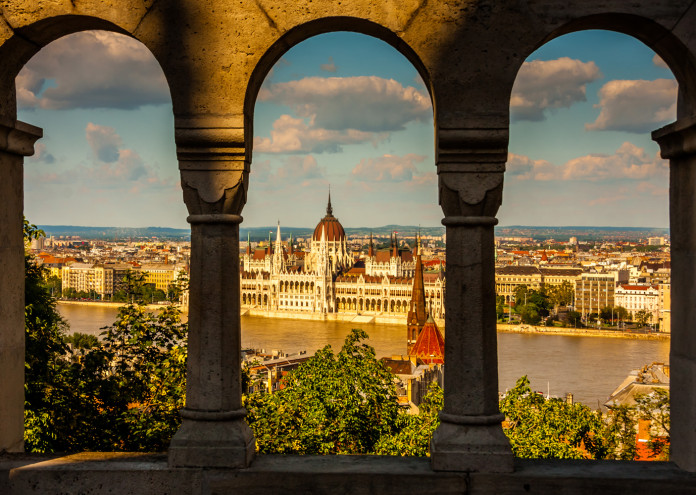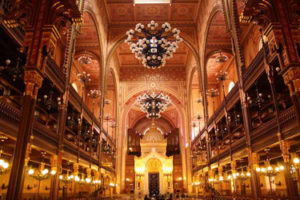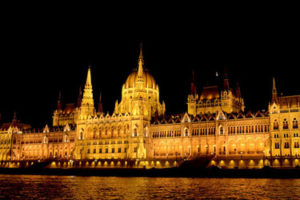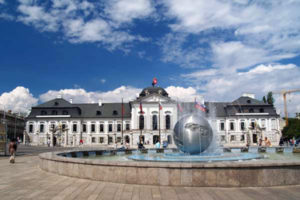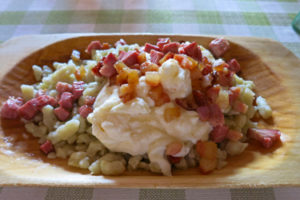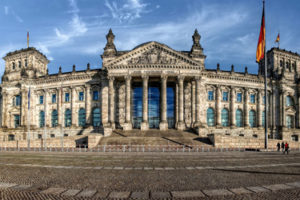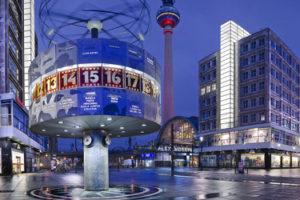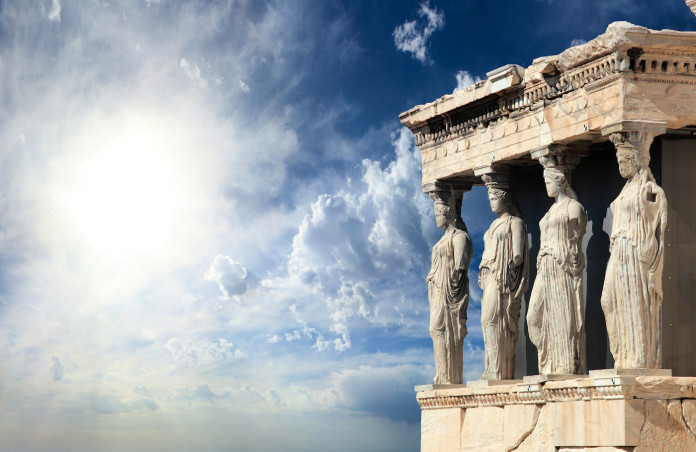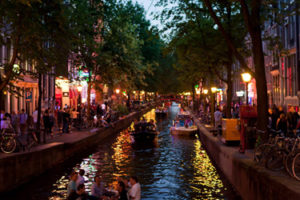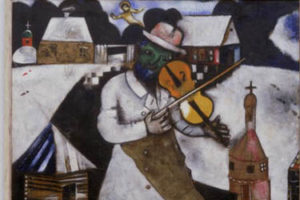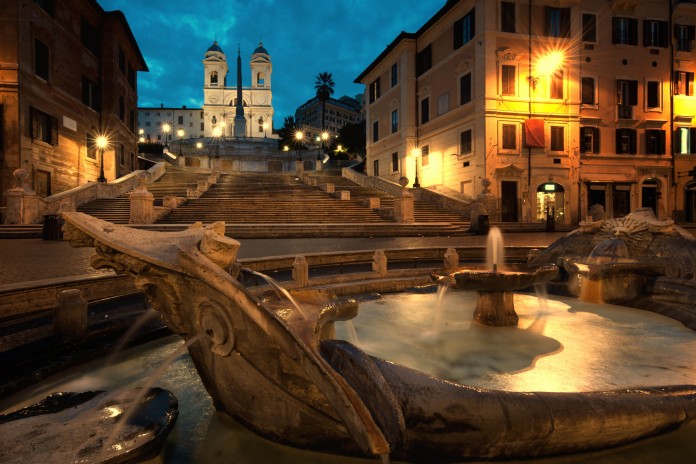Probably you do not have many information about this city, you just know something about the beauty of this wonderful place and it is precisely for this reason that you will be impressed by its incredible charm. A picturesque Old Town, parks, canals, architecture and design are the characteristic of Stockholm with a strong maritime features and international atmosphere.
Take a boat to go across the city and to visit parks, museums and ancient buildings. It will be something you will love to do in Stockholm, where 19 hours of sunlight a day, from May to July, will let you stay outside until late, without even noticing the time passing.
In this page we suggest you 10 things to do and see during a trip to Stockholm.
If you are looking for a hotel in Stockholm, we suggest you to choose among those offered by Booking.com. There are about 130 hotels with prices, pictures and comments of guests already stayed there. Go to Booking.com
Gamla Stan in Stockholm
1
Right here, in one of the largest and best preserved medieval city centres in Europe, was founded in 1252 the city of Stockholm. Walking through the characteristic and picturesque Gamla Stan area you will discover restaurants, monuments, shops and many other places that will tickle your fantasy and curiosity.

The particular cobbled streets with the yellow houses, are the business card of a unique area of its kind. The main tourist attraction of Gamla Stan is the Royal Palace, one of the largest buildings in the world, that with its 600 rooms, hosts interesting museums such as the Livrustkammaren, the Royal Armoury, which contains armor and royal robes. Among the most important streets of the neighbourhood, Västerlånggatanand Österlånggatan, were erected the walls that surrounded the city in the past. In Gamla Stan there is also the oldest square in Stockholm, Stortorget, and always from here begins the oldest street of the city, the Köpmangatan. In winter, when the snow lays down gently on the roofs of the house, Gamla Stan becomes the perfect setting for a beautiful book of fairy tales.
The Vasa Museum in Stockholm
2
The only ship of XVII century on earth is right in the Vasa Museum in Stockholm. The flagship Vasa is constituted by 95% of authentic pieces and is decorated with hundreds of carved sculptures.

The ship with its 69 meters long occupies a large part of the museum. In 1628, during his first maiden voyage, the ship sank in front of the coastline of Stockholm and was restored only in 1961, well after 333 years. It took fifty years to restore it in a careful and precise way to its former grandeur. The three trees on the outer roof of the structure was built just to accommodate the vessel, showing the height of the original trees. To learn more about the secrets of the flagship Vasa you can visit the nine different exhibitions that illustrate the ways of life on board and see the movie on the ship screened in 16 languages.
Where: Galärvarvsvägen 14, on the island of Djurgården in Stockholm.
How to get there:
Subway: Karlaplan stop
Tram: 7 from SergelsTorg / Hamngatan stop NordiskaMuseet / Vasamuseet
Bus: 69 stop Djurgårdsbron; 67 stop NordiskaMuseet / Vasamuseet.
When: From 2 January to 31 May and from September 1 to December 30: 10 am – 5 pm , Wednesday 10 am – 8 pm ; from 1 June to 31 August: 8.30 am – 6 pm 31 December: 10 am – 3 pm.
Never: December 23 to 25; January 1st.
Ticket: Adults: SEK 130
Kids / Children (0-18 years): free
Students (ID required): SEK 100
The Stockholm City Hall
3
Stockholm City Hall is one of the finest examples of Romanesque architecture in Swedish style and is dominated by three golden crowns, the symbol of the power of Sweden.

Designed by architect Ragnar Östberg and opened the evening of the summer solstice of 1923, the Town Hall is made up of eight million bricks and inside stand out the wonderful GylleneSalen, the Golden Hall, completely decorated with mosaics from 18 million gold cards, and the fresco of Prins Eugen, which depicts the view of the lake that can be seen from the gallery.
In the council chamber are settled meetings of the City Council of Stockholm and always within the walls of City Hall is held the grand reception of the Nobel Prizes. At the end of the visit, which can be realized only with an organized tour, you can have fun at the gift shop of the City Hall which presents a particular gadget and gifts.
Where: Hantverkargatan
How to get there:
Subway: Rådhuset stop (blue line)
Bus: 3 and 62 stop Stadshuset
When:
Tower: 10 am 4.30 pm . Organized tours: 10 am, 11 am, 12 pm, 2 pm, 3 pm; September-May 10 am 12 pm.
Ticket:
From April to October: adults 100 SEK; children aged 12 to 19 years 40 SEK; children up to 11 years free
From November to March: adults 70 SEK; children aged 12 to 19 years 20 SEK; children from up to 11 years free
ModernaMuseet in Stockholm
4
The Spanish architect Rafael Moneo designed the Museum of Modern Art in Stockholm in the wonderful natural scenery of Skeppsholmen. The charming island of Skeppsholmen located amongGamla Stan, the old town, and the island of Djurgården, is connected to the mainland by a bridge and make your visit to the museum even more impressive.

The Museum of Modern Art will offer you one of the most beautiful collections of art from the twentieth century to the present day, with the masterpieces of the great masters such as Dali, Picasso, Matisse and Derkert. Besides the prestigious collections of these illustrious geniuses and the temporary exhibitions, the museum will take you to discover contemporary art and modern classics. The museum also offers to its visitors a restaurant from which you can admire the beautiful view of Strandvägen, one of the most beautiful streets of the Swedish capital, and a cute gift shop. Kids will not get bored at the Museum of Modern Art in Stockholm thanks to a dedicated laboratory.
Where: Skeppsholmen island
How to get there: few minutes by feet from the train station and from the bus.
When: Tuesday, 1 am to 8 pm 0; Wednesday– Sunday 10 am to 6 pm
Never: Monday
Ticket: 80 Kr full ticket, 60 Krreduced ticket
Skansen in Stockholm
5
One of the most beloved places is Skansen, the ideal place for a nice night out with family and friends.

At Skansen you can admire the oldest open-air museum in the world and the Stockholm zoo. Take a nice walk through the historic buildings of Sweden in miniature and get the feeling of living into a hypothetical “neverland” between the glass-blowing workshops, those dedicated to ceramics, the workshops used for metals and bakeries. You will be enchanted by the particular eighteenth-century church made by Seglora wood, the yellow villa Skogaholm and the square of the Bollnästorget market. Don’t miss the Nordic animals at the zoo where you can see, bears, lynx, elk, wolves, seals.
In Skansen are celebrated the traditional holidays such as as Walpurgis Night, the summer solstice and Saint Lucia. But it really worth to see this extraordinary place during Christmas time when, completely covered by snow, there are many events such as the market and the traditional buffet.
Where: Djurgården
How to get there:
Bus: 44
Tram: 7
When: From 10 am to 8 pm , it may change on the basis of the different seasons
Ticket: From 100 to 170 SEK, on the basis of the different seasons
The Drottningholm Castle in Stockholm
6
The complex of the Drottningholm Palace, with Drottningholm Theatre, the Chinese Pavilion and the wonderful park, is one of a kind.

The Drottningholm Palace, dating back the seventeenth century, is the best preserved royal palace in Sweden since 1981 and is the permanent home of the royal family which occupies the south wing of it. So don’t be worry about it, you can enjoy the beauty of the castle because the park and almost all the rooms of the palace are open to the public throughout the year. Drottningholm was the first monument of Sweden to be declared World Heritage by UNESCO in 1991 thanks to the beauty of the castle, but also the eighteenth-century theater, and beautiful gardens in Baroque style. To get to the Drottningholm Palace will have to use the boat and cross the lakeMälaren.
Where: About 11 km far from the center
How to get there:
Subway: Brommaplanstop and then bus 301 or 323
Bus: 177 or 178 stop Drottningholm
When: From 10 am to 3.30 pm ; Weekends: 1 to 3.30 pm; never: 14 and 30 December
Ticket: Adults: SEK 120
Students: SEK 60
Children: up to 17 years old free entrance
Things to buy in Stockholm
7
In each area of Stockholm you can find different shopping features: there are neighbourhoods where you can have luxury shopping and others where you can find radical shopping. Östermalm is the most elite area of Stockholm where there are the most famous and exclusive international brands. You can start your luxury shopping in the famous atelier of Filippa K or Armani along the Biblioteksgatan, but if you love the pieces of furniture you cannot miss the classic shops SvensktTenn and Malmstenbutiken. In the area of Drottninggatan and SergelsTorg and Kungsträdgårdenneighborhoods shopping becomes more popular and accessible to all: clothing chains and shopping centerseverywhere. Purchases and extravagant shopping instead in the Södermalm area where fashion shops, interior design, design and vintage items are all original and trendy.
Things to eat in Stockholm
8
The strength of Stockholm cuisine is made by international dishes and traditional Swedish cuisine.

In this way are mixed ancient and modern flavours with experimental recipes. The numerous and cozy restaurants of the city create elaborate and amazing dishes based on fish and seafood, game and vegetables coming directly from Swedish lands.
There are also many rich buffet, with salmon and herring, that you can enjoy on wonderful terraces overlooking the lake. Whatever your preferences, you should definitely try a traditional Swedish meatballs with blueberriesjam, red or Arcticraspberries: do they seem something risky? Try it and you will not regret!
Nightlife in Stockholm
9
Have you ever heard about Stockholm nightlife? The city is very rich of discos and night clubs where you can dance from jazz to rock music, from pop to hard core, you’ll be spoilt for choice! Many bars are concentrated near Stureplan, in the heart of the city, but also inKungsgatan and Birger Jarlsgatan and the area near the Kungsträdgården park. Almost all the bars are open until 3:00 am, some even up to 5:00 during the week end. Thursday is the day during which the Swedes usually go to discos: they are very crowded and often you have to wait at the entrance before you can enter.
Where to sleep in Stockholm
10
Stockholm offers a great variety of hotels, hostels and camping to spend your holiday. No matter if it is a ultra-modern design or a creak ship, all accommodations are cozy and comfortable.

The service of hotels is always excellent and all the staff communicate with guests in English. Most hotels is 3 or 4 star and usually kids don’t pay. Very interesting and uniqueare historic houses and castles mostly located in the countryside, especially in the regions of Sodermanland and Uppland near Stockholm. The city hostels are very comfortable, affordable and clean, but we recommend you to book your place, especially in summer. Campsites are another cheap solution: some are really beautiful, situated near a fjord or equipped with very large green spaces to relax.
If you are looking for a hotel in Stockholm, we suggest you to choose among those offered by Booking.com. There are about 130 hotels with prices, pictures and comments of guests already stayed there. Go to Booking.com


 This tangled maze of narrow streets, squares, noble buildings with colorful façades, will surprise you during the (few) days of sun and will show you its romantic side during the night. The main points of interest of the Old Town are the Market Square (see point 2),the Castle Square (See point 4), the Barbican, the churches of St. John and St. Martin.
This tangled maze of narrow streets, squares, noble buildings with colorful façades, will surprise you during the (few) days of sun and will show you its romantic side during the night. The main points of interest of the Old Town are the Market Square (see point 2),the Castle Square (See point 4), the Barbican, the churches of St. John and St. Martin. Today is just a meeting point for tourists, attracted by the tables of cafés and restaurants, the gift shops in the alleys. On the four sides of the square there are the colorful houses, entirely rebuilt after the bombings of World War II, and designed by the Italian painter Bellotti. Following the best tradition of the East countries, the houses have strange names: the Basilisk, the Lion, Golden. At the center of the square there’s the statue of the Little Mermaid, considered the sister of the most famous one in Copenhagen. According to legend, this mermaid lived in the Vistula (river Warsaw) and annoyed the fishermen. Captured, but later released, by that time she watches over the Polish capital.
Today is just a meeting point for tourists, attracted by the tables of cafés and restaurants, the gift shops in the alleys. On the four sides of the square there are the colorful houses, entirely rebuilt after the bombings of World War II, and designed by the Italian painter Bellotti. Following the best tradition of the East countries, the houses have strange names: the Basilisk, the Lion, Golden. At the center of the square there’s the statue of the Little Mermaid, considered the sister of the most famous one in Copenhagen. According to legend, this mermaid lived in the Vistula (river Warsaw) and annoyed the fishermen. Captured, but later released, by that time she watches over the Polish capital. The ruins were left in the square until 1971 when the reconstruction began and ended in 1984. Don’t miss the collection of paintings with two works by Rembrandt. At the center of the square there’s the column of Sigismund, erected in 1644 in honour of the king who moved the capital from Krakow to Warsaw. From the Square starts the Royal Route that, with a route of 4 km, brought to the old palace of Wilanow (see point 4). The Royal Route is actually made up of three pieces of the road with different names in which there are Baroque and Renaissance palaces, churches, several monuments, cafés, luxury restaurants and souvenir shops.
The ruins were left in the square until 1971 when the reconstruction began and ended in 1984. Don’t miss the collection of paintings with two works by Rembrandt. At the center of the square there’s the column of Sigismund, erected in 1644 in honour of the king who moved the capital from Krakow to Warsaw. From the Square starts the Royal Route that, with a route of 4 km, brought to the old palace of Wilanow (see point 4). The Royal Route is actually made up of three pieces of the road with different names in which there are Baroque and Renaissance palaces, churches, several monuments, cafés, luxury restaurants and souvenir shops. It was built for the Polish king Jan III Sobieski at the end of 1600 and over the centuries there have been many owners such as kings, nobles and wealthy magnates. The sumptuousness is still evident, with frescoes, antique furniture and a nice gallery of pictures (with a Pietà by Cima da Conegliano). Magnificent the outdoor park with ponds, Italian and English gardens, fountains, statues. Surely the perfect stop during your visit to the several monuments.
It was built for the Polish king Jan III Sobieski at the end of 1600 and over the centuries there have been many owners such as kings, nobles and wealthy magnates. The sumptuousness is still evident, with frescoes, antique furniture and a nice gallery of pictures (with a Pietà by Cima da Conegliano). Magnificent the outdoor park with ponds, Italian and English gardens, fountains, statues. Surely the perfect stop during your visit to the several monuments. Among deaths from starvation, disease, deportations, an indefinite number of Jews died. Inside the Jewish area, almost everything was destroyed. Along the border, where there was the wall built by german people, there are writings in cast iron on the sidewalk. To commemorate the Warsaw of Jews, and to remember what it was, it has been created a Remembrance Street marked by 16 granite blocks and the Monument to the Heroes of the Ghetto representing men, women and children struggling in the flames and a row of Jews going to the concentration camp. In the old ghetto there are just few palaces in Via Prozna: left in ruins, as they were reduced by the Germans, and on the façades there are big pictures of Jews living in the ghetto, and killed by the Nazis.
Among deaths from starvation, disease, deportations, an indefinite number of Jews died. Inside the Jewish area, almost everything was destroyed. Along the border, where there was the wall built by german people, there are writings in cast iron on the sidewalk. To commemorate the Warsaw of Jews, and to remember what it was, it has been created a Remembrance Street marked by 16 granite blocks and the Monument to the Heroes of the Ghetto representing men, women and children struggling in the flames and a row of Jews going to the concentration camp. In the old ghetto there are just few palaces in Via Prozna: left in ruins, as they were reduced by the Germans, and on the façades there are big pictures of Jews living in the ghetto, and killed by the Nazis. Łazienki today is a museum, a place for events of all kinds and a place for walks. Wandering through the park you can meet the Palace on the Water, Myślewicki, the White House, the Orangery, temples, statues. A point of the park loved by Warsaw is the Monument to Fryderyk Chopin, born in the Polish capital, widely considered the prince of romantic music. Under this monument every Saturday and Sunday, there are also concerts of famous pianists. If you visit Warsaw in the spring or summer, don’t miss Łazienki: you will not regret.
Łazienki today is a museum, a place for events of all kinds and a place for walks. Wandering through the park you can meet the Palace on the Water, Myślewicki, the White House, the Orangery, temples, statues. A point of the park loved by Warsaw is the Monument to Fryderyk Chopin, born in the Polish capital, widely considered the prince of romantic music. Under this monument every Saturday and Sunday, there are also concerts of famous pianists. If you visit Warsaw in the spring or summer, don’t miss Łazienki: you will not regret. Actually we think that the Polish people could do without it, but now that the communist regime is far away, it can be appreciated for what it is: a 42 floors tower (the highest in Poland), with 3,000 rooms, offices, museums, swimming pool, cinema. The attraction for tourists is a terrace (trzydziestka) at the 30th floor where they can enjoy a unique view over the rooftops of Warsaw and beyond.
Actually we think that the Polish people could do without it, but now that the communist regime is far away, it can be appreciated for what it is: a 42 floors tower (the highest in Poland), with 3,000 rooms, offices, museums, swimming pool, cinema. The attraction for tourists is a terrace (trzydziestka) at the 30th floor where they can enjoy a unique view over the rooftops of Warsaw and beyond. To build Praga, in fact, it was burned an entire forest. It was a really dangerous place until a few years ago, but today Praga district is the trendy district of Warsaw (but be careful). It wasn’t destroyed by the bombings of World War II but became a bad place for many decades. It regained importance when Roman Polanski chose to shoot the film “The Pianist” in 2002. The Jewish Ghetto, where the story takes place, no longer existed and the rest of Warsaw was too new. So he chose the Praga district . Today it’s the favorite destination for artists, designers, architects and photographers.
To build Praga, in fact, it was burned an entire forest. It was a really dangerous place until a few years ago, but today Praga district is the trendy district of Warsaw (but be careful). It wasn’t destroyed by the bombings of World War II but became a bad place for many decades. It regained importance when Roman Polanski chose to shoot the film “The Pianist” in 2002. The Jewish Ghetto, where the story takes place, no longer existed and the rest of Warsaw was too new. So he chose the Praga district . Today it’s the favorite destination for artists, designers, architects and photographers. We have to say that Poland is not famous for its gastronomy but Warsaw, fortunately, is an exception: surely there are no many dishes, and after a few days you might not want to eat meat and potatoes for some months. However, you should taste Piroghi (ravioli stuffed with cheese, meat or other) barszcz (beetroot soup and ravioli) the chlodnik (a cold soup of sour milk) and bigos, meat stew. All this, of course, accompanied by the excellent Polish beer.
We have to say that Poland is not famous for its gastronomy but Warsaw, fortunately, is an exception: surely there are no many dishes, and after a few days you might not want to eat meat and potatoes for some months. However, you should taste Piroghi (ravioli stuffed with cheese, meat or other) barszcz (beetroot soup and ravioli) the chlodnik (a cold soup of sour milk) and bigos, meat stew. All this, of course, accompanied by the excellent Polish beer. For a double in the down town center in a 3-star hotel prices vary from 40 to 80 Euros per night. Hotels are numerous, over 500, but many are in the suburbs. If you have limited time we recommend a hotel in the Old City which will cost a little bit more, but you will save your time.
For a double in the down town center in a 3-star hotel prices vary from 40 to 80 Euros per night. Hotels are numerous, over 500, but many are in the suburbs. If you have limited time we recommend a hotel in the Old City which will cost a little bit more, but you will save your time.